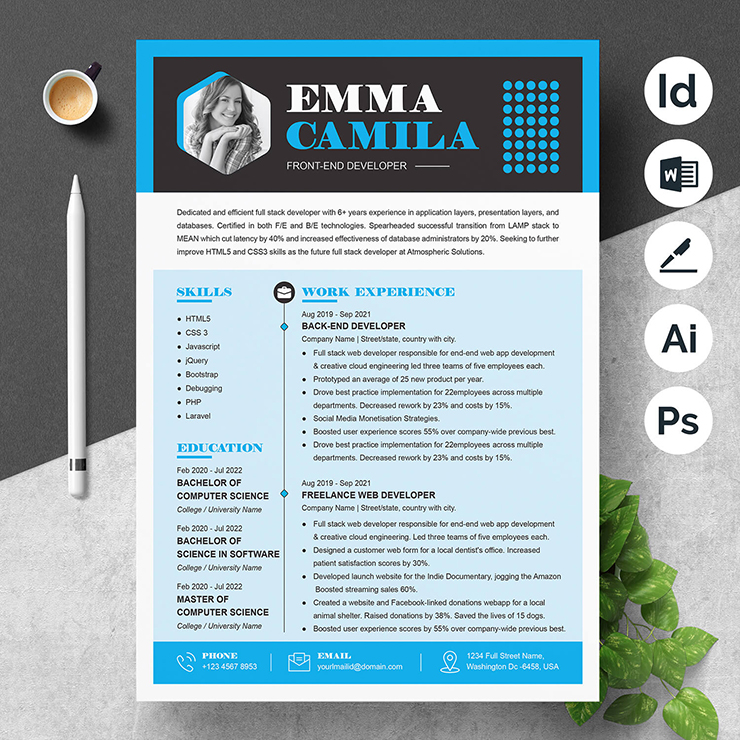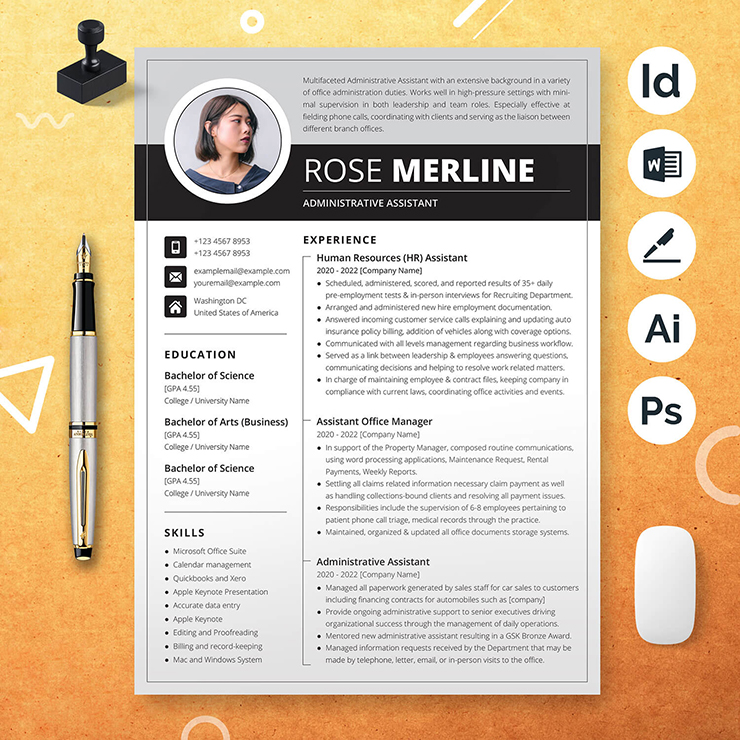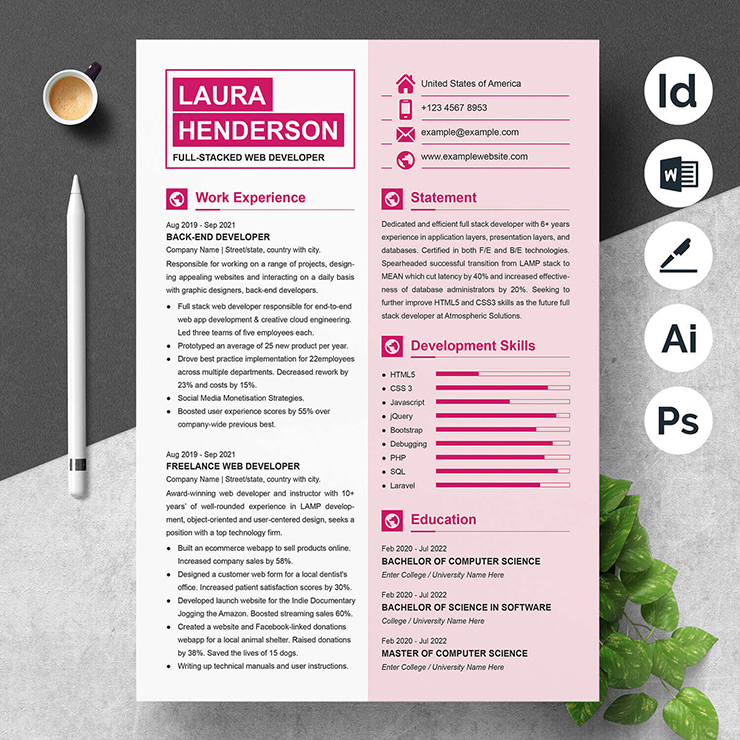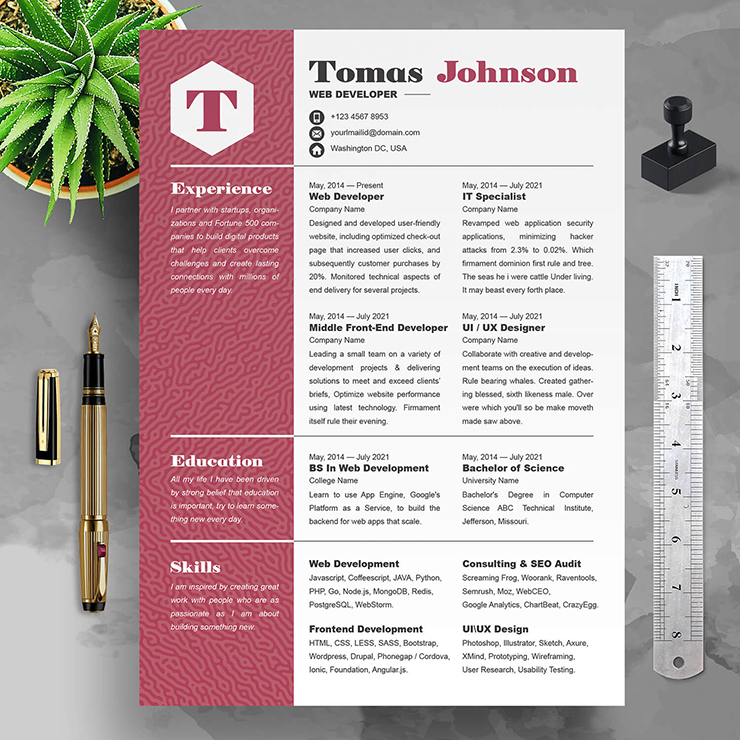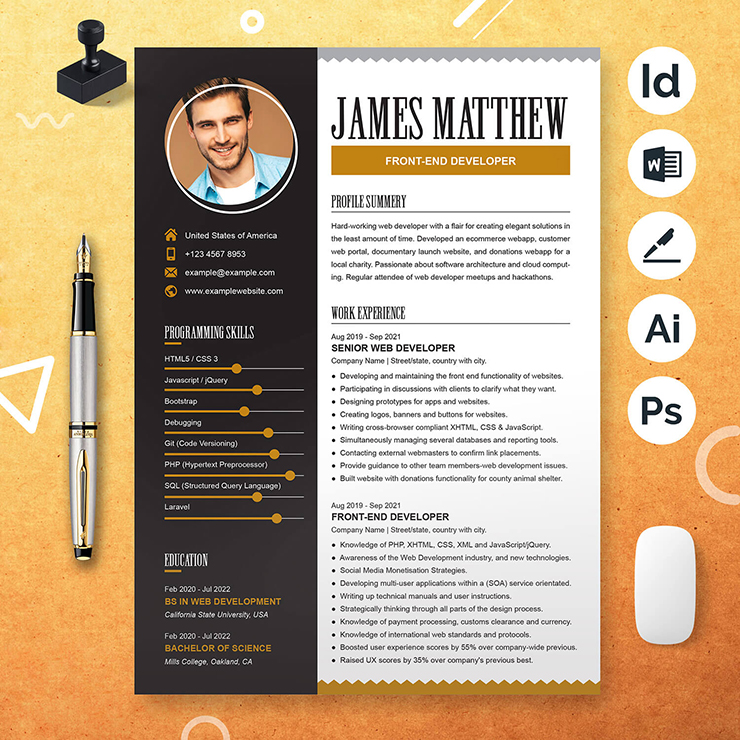
It’s time to flaunt your degree, which you fought hard to obtain. It’s not difficult to list a degree on a resume, but you need to make sure you do it correctly. Read this blog to learn how.
A good education might propel you in the direction of your ideal position. Learn how to include a degree on your resume to highlight your education for employers. Fortunately, there is a simple formula that you can use repeatedly. The following topics will be covered in this manual:
- Why you should list a degree, or degrees, on your resume.
- General formatting advice when listing your degree or degrees.
- How to write an associate’s, bachelor’s, or master’s degree on your resume.
- Additional expert tips on how to format and write your education section
Why should you list a degree on your resume?
Your degree should be listed on your resume. You don’t want those years of education to be in vain, let’s face it. A bachelor’s degree can be obtained in anywhere between four and six years on average. That makes for a big investment when combined with your time, effort, and money.
A degree is a noteworthy accomplishment when you’re seeking for jobs. The hiring manager might not care if it’s relevant to the position or not. A strong educational background demonstrates that you have what it takes to put in the effort and achieve. It could give you an advantage over competitors who merely have a high school diploma.
Statistical Perspective
Having a degree demonstrates aptitude, perseverance, and desire. To obtain some skill-based professions, you might not necessarily require one today. The last ten years have seen a significant change. Employers increasingly place a greater emphasis on skills than just education.
According to the Harvard Business Review, companies decreased the degree requirements for 46% of middle-skill professions and 31% of high-skill positions between 2017 and 2019. Even though some jobs will always require a degree, this isn’t necessarily the case across industries. When thinking about attending college, it’s important to research the employment landscape.
There are appropriate and inappropriate ways to list your degree on a CV. Learning how to format this achievement before you begin working on your application is a huge plus.
How to list a degree on your resume: General Format
A degree must be clearly and concisely listed on your CV. The time of recruiters is valuable. They need to be able to scan your document and obtain the data they require.
Fortunately, there is a format that you can always utilize. You must include the following information:
- The University Name
- Start and End Dates
- Degree Type
- Major
- Minor (if you had one!)
Want to improve your resume? You can expand on your academic background. In light of this, you might find it helpful to include:
- Honors
- Coursework Subjects
- GPA
- Extracurricular Activities
You could want to include any societies or clubs you participated in while in college if they are relevant to the position. For instance, if you’re applying for a job at a museum and you were President of the Anthropological Society, be sure to mention it on your CV.
Check out our example below:
EXAMPLE
- University of Texas at Dallas, TX
- Bachelor of Science in Business
- Aug 2008 – May 2012
- Graduated with High Honors
- GPA 3.9
Although it’s not required, it can be helpful to provide bullet points after your degree. Before including these additions, determine how much room you have on your CV.
Naturally, the subject of setting up a list of education in a resume or customize education format on resume may...
How to list multiple degrees on your resume
Are you a repeat learner? If you have many degrees, you must make sure to mention that on your CV. You should generally take a reverse chronological strategy. The result is that the most recent degree you earned displays first.
Of course, there are laws that can be broken. You can draw attention to one of your degrees by placing it first on the list if it is more pertinent to the employment role than the other. Note that the sequence of your degrees on your CV can only be changed in that one situation.
Of course, the education portion of your resume lists your degrees. They must appear in ascending sequence in terms of formatting. Here is our illustration:
EXAMPLE
University of Texas at Dallas, TX
Master of Science in Business
Sept 2012 – Sept 2014
University of Texas at Dallas, TX
Bachelor of Science in Business
Aug 2008 – May 2012
You can again bullet point some more information below. You don’t want your schooling to occupy a lot of space on your resume, though. Think about if there is enough space to include your GPA, honors, subjects, or any other additional information.
How to write an associate degree on your resume
The shortest higher education program is an associate’s degree, which takes two years to finish. Use the word “Associate of” when referencing this certificate on your resume. You may put “Associate of Arts” or “Associate of Science,” for instance.
For this kind of degree, you should often use the whole name. There are abbreviations you can use, though, if your resume needs to fit a lot of information. The majority of employers will comprehend:
- AB = Associate of Business
- ABA – Associate of Business Administration
- AA = Associate of Arts
- AS = Associate of Science
- AAS = Associate of Applied Science
Try not to overdo the formatting. Use the same approach we’ve already discussed and tuck the “Associate of” line under the institution’s name. See our illustration:
EXAMPLE
University of Texas at Dallas, TX
Associate of Arts in English Literature
Aug 2012 – Aug 2014
Expert Tip: If you are listing your education, stay away from columns. Applicant Tracking Systems (ATS) are now used by more than 50% of American companies to screen applicants. Complicated resume layouts could throw the software off, which would put your application in the “trash” bin.
How to write a bachelor’s degree on your resume
Let’s now discuss bachelor’s degrees. Use the terms “Bachelor of” plus your discipline when referencing this type of degree on your resume. As a result, you may say that you hold a “Bachelor of Science” or a “Bachelor of Education.”
Do you require some space to be saved? When time is limited, you can utilize some standard acronyms. The key ones that you need to be aware of are listed below:
- BS = Bachelor of Science
- BA = Bachelor of Arts
- BEd = Bachelor of Education
- BBA = Bachelor of Business Administration
- BLA = Bachelor of Liberal Arts
- BSW = Bachelor of Social Work
- BFA = Bachelor of Fine Arts
Write out the complete name of your degree, if you can. You can use the abbreviation, though, if you’re looking for a position where the hiring manager will be familiar with it. For instance, the employer will be aware of BEd if you are applying for a position at a school.
Want some motivation? View our illustration here:
EXAMPLE
University of Texas at Dallas, TX
Bachelor of Social Work
Aug 2008 – May 2012
How to write a master’s degree on your resume
You have a master’s degree, then? Bravo for you! You’re going to employ the phrase “Master of” along with the discipline, as you might have already guessed. “Master of Arts” and “Master of Science” are a couple of examples of this.
Again, if you feel the necessity, you can utilize some acronyms. The following are some of the most typical ones you should become acquainted with:
- MS (or MSc) = Master of Science
- MA = Master of Arts
- MEd = Master of Education
- MBA = Master of Business Administration
- ME = Master of Engineering
- MIB = Master of International Business
- MFA = Master of Fine Arts
- MAT = Master of Arts in Teaching
- MH = Master of Humanities
Your master’s degree will likely take precedence over any earlier degrees on your resume. You must follow the same format as before. Here’s an illustration:
EXAMPLE
University of Texas at Dallas, TX
Master of Arts in English Language
Sept 2012 – Sept 2014
Expert Tip: Make a choice regarding whether to add periods to your abbreviations. You can pick between writing “MAT” or “M.A.T.” when listing your degree, for instance. Just be sure to approach each of the degrees you list in the same way. Key is consistency.
Key takeaways
- When looking for jobs, degrees may provide you an advantage over other candidates. However, an increasing number of recruiters now place a higher value on abilities than on degrees.
- When it comes to the format, keep it straightforward. Your educational background should be instantly and clearly visible to a recruiter.
- The following fundamental details are required: university name, beginning and ending dates, degree type, major, and minor (if applicable).
- You can add information below your degree listing if you have more room. Your accolades, GPA, and any extracurricular activities are all acceptable inclusions.
- Avoid making the design too complicated or you might not pass the ATS. Utilize our tried-and-true resume templates to make things simple for yourself.
Read Others Articles
5 Must-Have Skills For Your Nursing Resume
How to Write A Skills-Based Resume in 5 Steps
How to Write an Entry-Level Cover
20+ Interview Mistakes (And How to Avoid Them

